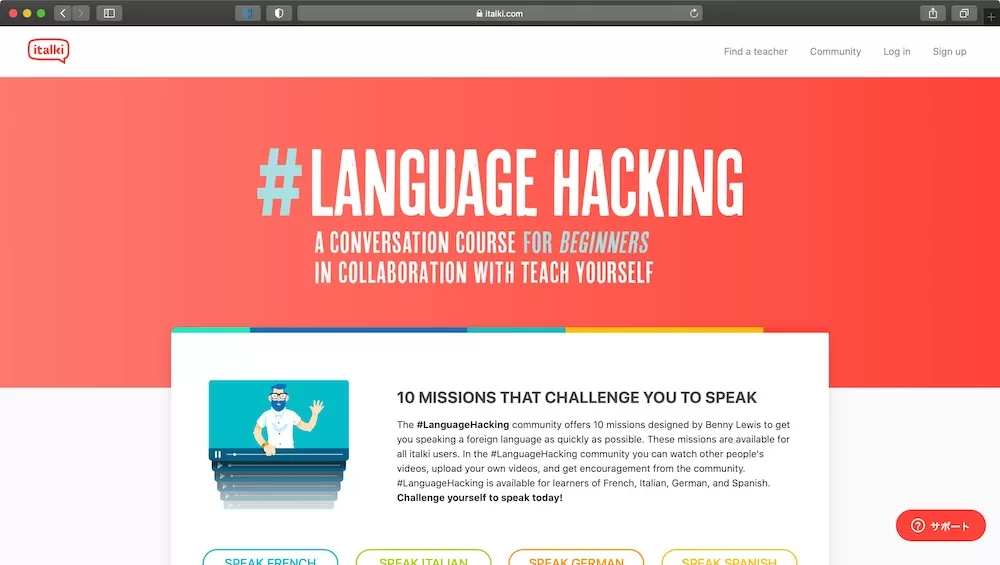Have you ever wondered that if self-taught language learning would improve your speaking skill or no?
You can’t improve your speaking by self-taught? …No, it’s NOT true!
I’ve been an italki user for many years and found an interesting method here about 5 years ago. In addition, I also experienced that even if I was self-taught, I could improve my speaking skill.
#LanguageHacking
This page of italki introduces an interesting method called #LanguageHacking.

THE LANGUAGE HACKING METHOD
https://www.italki.com/languagehacking
#LanguageHacking isn’t just a course. It’s a new way of thinking about language learning and how people communicate today.Language “hacks” are shortcuts you can use to get fluent faster.Language hacking gets you speaking right from day one! You’ll be having real conversations with real people.You don’t need a super memory. And it’s definitely not about having perfect grammar. You just need to be willing to give new things a try.It may be a bit unconventional but it’s not magic. It’s just a smarter way to learn languages. Anyone can do it. Are you in?
This method was designed by Benny Lewis. You can see his blog here.
italki focuses on 4 languages (French, Italian, German, and Spanish), but this method can be used in any other language learning also.
If you register with italki, you can see the pages of each language of #LanguageHacking, but there are 3 main points I can say.
- Start speaking about yourself
Try to start with an easy self-introduction and gradually expand the range. - Talk about things & people around you
- Talk about your usual action
Talk about your everyday life, such as what you did today / yesterday and what you will do tomorrow.
As an image, it’s like that you’ll gradually spread the focus aiming for.
Steps to start speaking – to move forward
Now we got a hint of what to talk about. But what steps should we take to speak? I will show you the tips on how to do that.
Step 1. Write in a notebook about the theme
Look up words you don’t understand in Google Translate or dictionaries. It’ll be good learning as well. The point in this step is NOT to write too long sentences.
Step 2. Read aloud
Read the sentence you wrote at Step 1 aloud. It’s okay to look at the text. If you can record your own voice, do so.
Step 3. Keywords
Highlight the important words in the sentence and write them out to the list. This will also be your wordbook! Then read it aloud again, keeping in mind the highlighted words.
Step 4. Presentation
Presentations may be exaggerated, but in other words, you speak without reading the text. Speak while looking at the list of words you created in Step 3. Let’s also record with video. This will be a record of your language journey!
Now, let’s start speaking from today!
If you need any advice on your speaking, feel free to get in touch with me.





